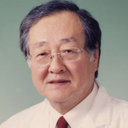Brain transplantation of immortalized human neural stem cells promotes functional recovery in mouse intracerebral hemorrhage stroke model.
Keywords
Coimriú
We have generated stable, immortalized cell lines of human NSCs from primary human fetal telencephalon cultures via a retroviral vector encoding v-myc. HB1.F3, one of the human NSC lines, expresses a normal human karyotype of 46, XX, and nestin, a cell type-specific marker for NSCs. F3 has the ability to proliferate continuously and differentiate into cells of neuronal and glial lineage. The HB1.F3 human NSC line was used for cell therapy in a mouse model of intracerebral hemorrhage (ICH) stroke. Experimental ICH was induced in adult mice by intrastriatal administration of bacterial collagenase; 1 week after surgery, the rats were randomly divided into two groups so as to receive intracerebrally either human NSCs labeled with beta-galactosidase (n = 31) or phosphate-buffered saline (PBS) (n = 30). Transplanted NSCs were detected by 5-bromo-4-chloro-3-indolyl-beta-d-galactoside histochemistry or double labeling with beta-galactosidase (beta-gal) and mitogen-activated protein (MAP)2, neurofilaments (both for neurons), or glial fibrillary acidic protein (GFAP) (for astrocytes). Behavior of the animals was evaluated for period up to 8 weeks using modified Rotarod tests and a limb placing test. Transplanted human NSCs were identified in the perihematomal areas and differentiated into neurons (beta-gal/MAP2(+) and beta-gal/NF(+)) or astrocytes (beta-gal/GFAP(+)). The NSC-transplanted group showed markedly improved functional performance on the Rotarod test and limb placing after 2-8 weeks compared with the control PBS group (p < .001). These results indicate that the stable immortalized human NSCs are a valuable source of cells for cell replacement and gene transfer for the treatment of ICH and other human neurological disorders. Disclosure of potential conflicts of interest is found at the end of this article.


